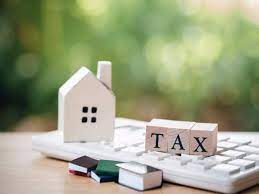Here Is A Simple Guide For You On How To Calculate Deemed Rent On Vacate Homes
Even if one of your properties is vacant, having more than two houses might result in tax obligations. Here, the idea of “deemed rent” is put into use. In essence, it indicates that you would be required to pay income tax on an empty property in the same manner as if you were receiving rental revenue.
When you possess a vacant property during a financial year, deemed rent becomes due; however, it only applies to properties that you utilize for personal use after the first two. The concept is that the property is considered to be leased out even while it is vacant and losing money.
There are a few factors to take into account when determining how much tax you owe on a considered rental property.
How to determine the home’s Gross Annual Value (GAV):
The GAV must be determined before you can compute the revenue from an empty dwelling property (deemed rent). This is the anticipated rent that the property would bring in if it were leased out.
The GAV is calculated in two phases.
First, weigh the municipal value vs the fair rent to determine which is greater. If your property is covered by the Rent Control Act, compare this amount to the going rate and choose the lowest of the two. The reasonable anticipated rent is the value that results, and it becomes the GAV. Remember that there is no real rental revenue since the property is considered to be rented out. If the property were truly leased out, the GAV would be greater.
selecting the appropriate Income Tax Return (ITR) form and determining the income for each property:
You cannot just fill out ITR-1 or ITR-4 forms if you own numerous residential homes. Depending on your income kind and source, where you live, and other pertinent circumstances, you must choose the appropriate ITR form. It’s crucial to calculate the income for each property individually and then claim the appropriate deductions.
Property held as stock in trade exceptions:
If you happen to possess many unoccupied homes, the tax agency may see all but two of them as having been leased out. There is a method to escape this categorization, however. You may prevent the considered rent situation by keeping accurate accounting records, treating the properties as stock in trade inventories, and filing accurate income tax returns.
Selecting the ideal home for self-occupation:
It makes sense to declare the property with the higher GAV as your self-occupied property to lower your tax burden. By doing this, the value of the remaining properties will decrease, lowering your income tax obligation.







